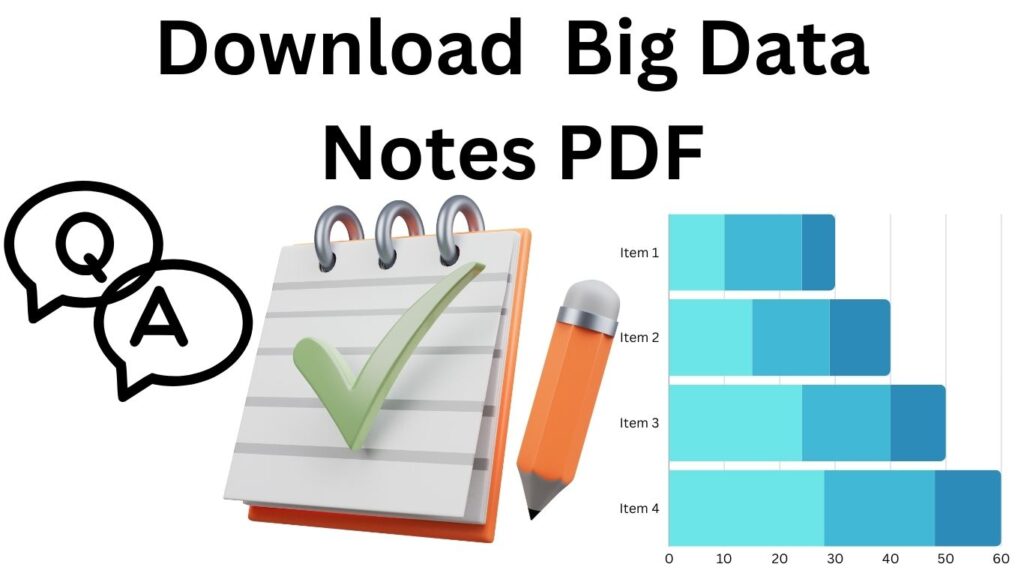Download Big Data Handwritten Notes PDF for CS and IT:
Introduction to BIG DATA
Big Data refers to the massive volume of structured and unstructured data that organizations generate on a daily basis. This data is characterized by its velocity, variety, and volume, often exceeding the capacity of traditional database systems to capture, store, manage, and process it effectively. The concept of Big Data is centered around the idea that valuable insights can be derived from analyzing large and diverse datasets. Big Data Handwritten Notes is a good resource to learn Big Data.
How to download Big Data Handwritten Notes for free?
Simply click on the given link to get Big data Handwritten notes in PDF format.
Unit 1 Download, Unit 1 Part 2
Download Big Data PYQs. Click Here
Big Data Syllabus PDF. Click Here
CS/ IT other subject handwritten Notes PDF. Click Here
Key characteristics of Big Data:
- Volume: Big Data involves large amounts of data. This can range from terabytes to petabytes of information generated by various sources, including social media, sensors, business transactions, and more.
- Velocity: Data is generated and collected at an unprecedented speed. For example, social media posts, online transactions, sensor data, and other real-time sources contribute to the rapid influx of data that needs to be processed promptly for timely insights.
- Variety: Big Data comes in various formats, including structured, semi-structured, and unstructured data. Structured data is organized and follows a predefined data model, like a relational database. Unstructured data, on the other hand, lacks a predefined data model, and examples include text, images, audio, and video.
- Veracity: Refers to the reliability and trustworthiness of the data. Big Data can be messy, with inconsistencies and errors, making it challenging to ensure the accuracy and quality of the information.
- Value: The ultimate goal of Big Data is to extract valuable insights and knowledge from the vast amounts of data available. This can lead to better decision-making, improved business processes, and a deeper understanding of various phenomena.
- Variability: This refers to the inconsistency in the data flow. The data flow can be unpredictable, with periodic peaks and valleys, making it challenging to manage and analyze.
Unit 2 Download, Part 2
To handle Big Data effectively, organizations often employ specialized technologies and tools, such as:
- Distributed Computing: Technologies like Apache Hadoop and Apache Spark enable the distributed processing of large datasets across clusters of computers.
- NoSQL Databases: These databases are designed to handle unstructured and semi-structured data efficiently. Examples include MongoDB, Cassandra, and Couchbase.
- Data Warehousing: Solutions like Amazon Redshift, Google BigQuery, and Snowflake provide scalable data storage and analytical capabilities.
- Data Lakes: Large repositories that can store vast amounts of raw data in its native format until it is needed. This allows for more flexible and diverse analysis. Examples include Apache Hadoop Distributed File System (HDFS) and Amazon S3.
- Machine Learning and Advanced Analytics: Techniques and algorithms are applied to extract meaningful patterns, correlations, and insights from Big Data.
The field of Big Data analytics is continually evolving, and its applications span various industries, including finance, healthcare, retail, manufacturing, and more. The ability to harness the power of Big Data can lead to innovation, efficiency improvements, and a competitive edge for organizations.